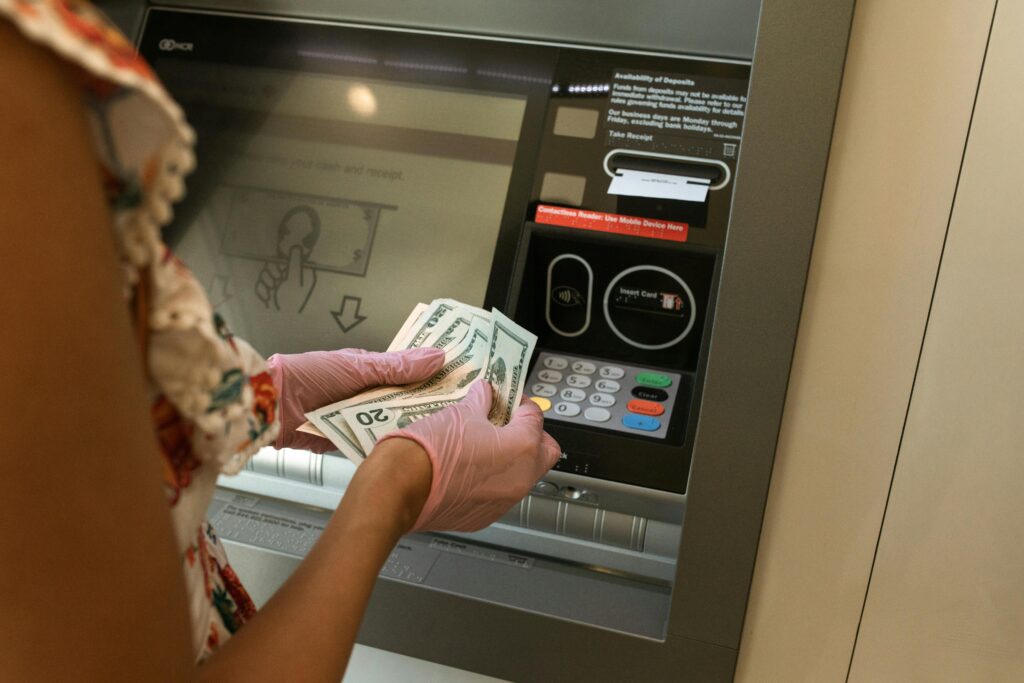How to Build an Emergency Fund Quickly
Building an emergency fund has become one of the most important financial responsibilities in today’s uncertain economic environment. With rising inflation, job layoffs, sudden medical emergencies, and unpredictable expenses becoming more frequent, having savings set aside for emergencies is not optional anymore—it’s a necessity. Many individuals understand the importance of saving but struggle to build an emergency fund because of irregular income, high living costs, overspending habits, and lack of financial discipline. However, the good news is that anyone, regardless of income level, can build an emergency fund quickly with the right strategy and mindset.
 An emergency fund acts as a financial safety cushion that protects you during unexpected situations such as sudden job loss, hospitalization, car or bike repairs, urgent family needs, or temporary drop in income. When you have an emergency fund, you avoid borrowing money from credit cards, personal loans, or friends and family. Instead, you stay financially independent, stress-free, and better prepared for the future. This guide explains exactly how to build an emergency fund fast using practical and proven methods that work for real people.
An emergency fund acts as a financial safety cushion that protects you during unexpected situations such as sudden job loss, hospitalization, car or bike repairs, urgent family needs, or temporary drop in income. When you have an emergency fund, you avoid borrowing money from credit cards, personal loans, or friends and family. Instead, you stay financially independent, stress-free, and better prepared for the future. This guide explains exactly how to build an emergency fund fast using practical and proven methods that work for real people.
There is no need for high salary, complicated investment knowledge, or extreme sacrifice. What you need is a simple system that helps you save consistently, control unwanted expenses, and grow your money safely. Let’s begin with understanding the basics.
What Is an Emergency Fund and Why Is It Important?
An emergency fund is a savings account specifically meant for urgent and unexpected expenses. It is not used for shopping, vacations, luxury purchases, or entertainment. Instead, it protects you from financial stress when life surprises you. The main purpose of an emergency fund is to allow you to face difficult situations with confidence and financial security.
Most financial experts suggest saving at least 3 to 6 months of living expenses as an emergency fund. For example, if your monthly expenses are ₹25,000, you need at least ₹75,000 to ₹1,50,000 as emergency savings.
Why is this important? Because emergencies never come with warning. Medical bills, job issues, or sudden repairs can disturb your entire financial structure if you are unprepared. Many people end up using credit cards or personal loans, which increases debt and interest burden. Building an emergency fund helps you avoid falling into the debt trap.
An emergency fund gives you peace of mind, better decision-making ability, and financial stability. When your savings are strong, you don’t panic during crisis situations. Instead, you handle them wisely.
How Much Emergency Fund Do You Really Need?
The ideal emergency fund amount depends on your income, responsibilities, and lifestyle. There is no universal number that fits everyone. However, the best way to calculate is by understanding your monthly expenses.
Step-by-Step Calculation for Best Strategy to Build an Emergency Fund Quickly
List down all necessary expenses such as rent, groceries, EMIs, school fees, transportation, electricity bills, and medical costs. These basic survival expenses determine the size of your emergency fund.
If your total monthly basic expenses are ₹20,000 and you want 6 months’ security, then: ₹20,000 × 6 months = ₹1,20,000 emergency fund needed
If your income is irregular or you run a business, it is safer to save at least 9–12 months of expenses.
How to Build an Emergency Fund Quickly — Practical Strategy that Works
Most people think saving money requires huge sacrifices. But the truth is different. Big results come from small daily decisions. Here are practical steps anyone can follow to build an emergency fund in a short time:
Step 1 — Start Saving Immediately, Even with Small Amounts (Start Today Method)
If you want to build an emergency fund quickly, start with a savings habit.Many people delay saving because they believe they will start once they earn more. But income growth is uncertain, whereas expenses always grow. If you wait for the “perfect time,” you will never start. Instead, begin with whatever amount you can. Even ₹50 per day becomes ₹1,500 per month and ₹18,000 per year. Small money saved consistently becomes big money over time.
The key is to build the habit first. Once the habit becomes strong, increasing the amount becomes easy. Savings is not about the amount—it is about discipline.
Step 2 — Create a Separate Savings Account Only for Emergency Funds
 One of the fastest ways to build an emergency fund quickly is by automating savings.Do not keep emergency savings in the same account you use for daily expenses. When money is easily accessible, it gets spent quickly. Open a dedicated savings account or online bank account with good interest rate and zero-balance requirement. Keep your emergency fund strictly separate and untouched. Visual separation increases discipline and prevents misuse.
One of the fastest ways to build an emergency fund quickly is by automating savings.Do not keep emergency savings in the same account you use for daily expenses. When money is easily accessible, it gets spent quickly. Open a dedicated savings account or online bank account with good interest rate and zero-balance requirement. Keep your emergency fund strictly separate and untouched. Visual separation increases discipline and prevents misuse.
Step 3 — Follow the 50/30/20 Budget Rule to Control Spending
One of the fastest ways to build an emergency fund is by budgeting properly. The 50/30/20 rule means:
• 50% income for needs
• 30% for wants
• 20% for savings & investments
If your expenses are too high, shift temporarily to 60/20/20 or 70/10/20. The goal is to increase savings percentage for emergency fund building. When spending is controlled, savings grow automatically.
Step 4 — Cut Down Unnecessary Expenses and Redirect Money into Savings
Overspending is the biggest enemy of emergency savings. Many people lose money on unnecessary shopping, food delivery, subscriptions, impulsive purchases, and entertainment. Small frequent expenses become large amounts. Track your expenses and eliminate what you don’t need. Cancel unused memberships, reduce luxury spending, follow a weekly budget, and buy only what is essential.
Every ₹100 saved today is ₹100 closer to emergency security tomorrow.
Step 5 — Increase Your Income Through Side Hustles or Freelancing
If reducing expenses is not enough, increase your income. In today’s digital world, there are hundreds of ways to earn extra money—freelancing, part-time jobs, online tutoring, content writing, affiliate marketing, stock photography, reselling products, or selling skills online. Even an extra ₹5,000 to ₹10,000 per month can build your emergency fund much faster.
Instead of thinking “I can’t save,” think “How can I earn more?”
Step 6 — Automate Monthly Savings (Set and Forget Method)
Automating savings is one of the most powerful techniques to build an emergency fund consistently. Set up auto-debit from your salary account to your emergency fund account every month on salary day. You save before spending instead of saving after spending. Automation builds discipline without emotional struggle.
Step 7 — Avoid Using Your Emergency Fund for Non-Emergencies
The biggest mistake people make is using emergency savings for vacations, new gadgets, parties, or shopping. Always ask yourself: “Is this a real emergency?” If not, don’t touch it. Protect your savings like a warrior. If needed, create another account for short-term goals such as travel or festivals.
Step 8 — Put Extra Income or Bonuses Directly into Your Emergency Fund
Unexpected income such as salary bonuses, incentives, tax refunds, festival gifts, and cashback should be added directly to your emergency savings. Instead of spending, invest that lump-sum to reach your goal faster. This gives your fund a big jump instantly.
Step 9 — Use High-Interest Savings Options to Grow Your Emergency Fund Safely
Emergency fund money should always be in safe, liquid, risk-free instruments like: • High-interest savings account • Liquid mutual funds • Recurring deposit (RD) • Short-term FD with premature withdrawal option
Do not invest emergency funds in stock market, crypto, or risky assets. Safety and liquidity are more important than high returns.
Step 10 — Track Your Progress Monthly and Increase Savings Gradually
Review your emergency fund growth every month. If your income increases, increase your savings amount too. Keep a goal tracker and celebrate milestones. Seeing visible progress keeps you motivated and committed.
How Long Does It Take to Build an Emergency Fund?
The time required depends on how consistently you save and how aggressively you grow your income. If you save ₹10,000 every month, a ₹1,00,000 fund can be built in 10 months. If you save ₹15,000, you can reach it in 7 months. Faster saving means stronger discipline and smart money management.
Common Mistakes People Make While Building an Emergency Fund
Many people attempt saving but fail because of common errors such as: • Waiting too long to start
• Using savings for non-emergencies
• Relying only on loans or credit cards
• Not tracking expenses
• Not having financial goals
• Depending on irregular motivation instead of habit
Avoid these mistakes and focus on consistent progress rather than perfection.
How an Emergency Fund Changes Your Life
When you have emergency savings: • You sleep peacefully without financial stress
• You avoid debt traps and high-interest loans
• You make better decisions during crisis
• You become financially confident
• You stay independent without borrowing from others
• Your long-term goals remain safe
A strong emergency fund is the foundation of wealth and stability.
Real-Life Example to Understand the Power of Savings
Imagine two people earning the same income. One spends everything and another saves ₹8,000 per month. After 12 months, the saver has ₹96,000. If a sudden medical emergency costs ₹70,000, the first person goes into debt and stress, while the second person handles it peacefully without borrowing. Same income, different decisions, different results.
This shows that building an emergency fund is not about income—it is about mindset.
According to Reserve Bank of India (RBI) guidelines, emergency savings should be kept in liquid and safe accounts.www.rbi.org.in
Click here 👇 for more tips…
How to manage salary effectively
How to control overspending money
Final Conclusion
Building an emergency fund quickly is possible for everyone, regardless of salary, age, or background. You just need commitment, discipline, and smart planning. Start today, save consistently, reduce unnecessary spending, increase income through side hustles, automate savings, and protect your fund. Your future self will thank you. Financial confidence begins with your first step.
An emergency fund is not just money—it is freedom, control, safety, and peace of mind. Start now, don’t wait.
FAQ — Frequently Asked Questions
What is the first step to building an emergency fund?
Start saving immediately, even with a small amount, and open a separate account.
Where should I keep my emergency fund?
In a safe, liquid option like a high-interest savings account or liquid mutual fund.
How fast can I build an emergency fund?
Depending on savings rate, most people can build a 6-month fund within 6–12 months.
Can I invest my emergency fund?
No, emergency fund should be risk-free and easily accessible.
Is emergency fund more important
than investments?
Yes, always build emergency savings first before investing.

Leave a Reply